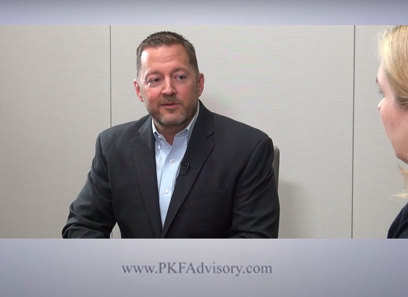Things You Should Know About Purchase Price Allocation
A Comprehensive Overview to Comprehending Purchase Price Allocation in Mergers and Acquisitions
Understanding Purchase Price Allocation (PPA) is important in the realm of mergers and acquisitions, as it directly influences monetary coverage and critical decision-making. By accurately dispersing the purchase rate among identifiable possessions and obligations, organizations can make certain compliance with accounting requirements while optimizing their economic results.
Interpretation of Purchase Price Allocation

The PPA procedure generally begins with the recognition of the acquisition date, after which the acquirer should establish the total purchase cost. This total includes not only cash settlements yet also any kind of contingent factor to consider, stock transfers, and responsibilities presumed. The following action entails assigning this acquisition price to the fair worth of each recognizable asset and responsibility, which can consist of realty, equipment, intellectual residential property, and various other abstract assets.
In addition, any type of excess acquisition rate past the fair value of identifiable net possessions is categorized as a good reputation. Precise PPA is vital as it affects economic reporting, tax effects, and future profits projections. By sticking to relevant accountancy standards, such as IFRS 3 or ASC 805, firms make certain conformity and openness in monetary reporting, which is vital for stakeholders and investors.
Importance of PPA in M&A
Exact acquisition rate allocation (PPA) plays a significant role in mergings and procurements, affecting different elements of the bargain's economic and functional outcomes. Appropriately performed PPA guarantees that the acquisition price is properly dispersed amongst the recognizable possessions gotten and responsibilities assumed, providing a clear image of the investment's worth. This allotment is vital for economic reporting and compliance with accounting criteria, as it straight impacts the acquirer's equilibrium sheet and revenue statement.
Moreover, PPA has effects for tax considerations. By properly recognizing intangible assets and their corresponding worths, business can optimize amortization timetables and tax deductions, eventually affecting their cash money circulation. Additionally, a well-structured PPA can boost the understanding of synergies prepared for from the transaction, directing critical decision-making post-acquisition.
In the affordable landscape of M&A, reliable PPA can likewise promote negotiations, as it gives clearness and openness regarding the evaluation and well worth of the target company. This precision can cultivate trust fund amongst stakeholders and add to smoother integration processes. Ultimately, the significance of PPA in M&A can not be overemphasized, as it lays the structure for sound monetary administration and tactical growth campaigns complying with the purchase.
Key Components of PPA
A comprehensive understanding of the crucial parts of acquisition price allowance (PPA) is crucial for effectively managing the intricacies of mergers and acquisitions. The main aspects of PPA include the identification of the purchase price, the reasonable worth assessment of obtained possessions and liabilities, and the succeeding classification of these elements.
At first, the acquisition cost represents the total consideration moved by the acquirer, consisting of money, stock, and other forms of payment. Next, the fair value of gotten identifiable properties and obligations have to be her latest blog figured out, which typically incorporates concrete possessions such as building and equipment, as well as abstract possessions like hallmarks, patents, and customer connections. Accurate appraisal is vital, as it impacts financial reporting and tax obligation effects.
Additionally, responsibilities thought in the deal, consisting of contingent liabilities and financial debt, have to be analyzed at reasonable worth. The distinction between the total purchase cost and the reasonable worths of recognizable properties and liabilities causes goodwill, which mirrors the premium spent for synergies and abilities not individually recognizable. Comprehending these elements ensures conformity with bookkeeping requirements and improves critical decision-making throughout the M&A process.
Methodologies for PPA
Numerous methodologies are employed to carry out purchase cost allowance (PPA), each offering distinctive techniques to valuing gotten assets and liabilities - Understanding PPA Allocation. One of the most typical methods include the price method, market approach, and income strategy
The expense technique concentrates on the substitute cost of the possessions, approximating what it would certainly take to recreate the asset in its current problem. This approach is particularly beneficial for concrete assets, such as residential or commercial property and equipment.

The earnings method, on the other hand, stresses the present value of future capital expected to be generated by the assets. This strategy is especially relevant for intangible assets, such as patents and trademarks, where future efficiency can be forecasted.
Picking the ideal method depends upon the nature of the gotten properties, market problems, and the certain context of the purchase. Using a mix of these techniques might additionally generate a much more comprehensive view of the fair worth of the possessions and liabilities included.
Finest Practices for Efficient PPA
Just how can organizations ensure a smooth purchase price appropriation (PPA) process? Applying finest practices is crucial for attaining accuracy and compliance. Organizations should establish a clear structure that defines duties and obligations throughout the PPA process. This includes identifying crucial stakeholders-- such as money, lawful, and operational groups-- who will certainly add to information collection and evaluation.
Second, companies need to gather extensive and trusted information associated to the acquired assets and obligations. This involves conducting complete due diligence to evaluate reasonable worth and audit ramifications properly. Using third-party appraisal professionals can enhance objectivity browse around this site and guarantee adherence to pertinent accounting criteria.
In addition, it is necessary to keep open lines of communication amongst all events included. Regular meetings can facilitate the exchange of understandings and attend to any type of possible discrepancies early while doing so.
Lastly, companies must document all presumptions, approaches, and searchings for thoroughly. This not just aids in conformity however additionally works as a recommendation for future acquisitions - Purchase Price Allocation. By adhering to these finest practices, companies can improve the performance and efficiency of their PPA process, eventually supporting better economic coverage and strategic navigate to this site decision-making
Final Thought
In conclusion, Purchase Price Allocation (PPA) is a critical procedure in mergings and acquisitions that ensures exact assessment of identifiable properties and obligations. Efficient PPA not only enhances financial reporting and tax effects yet additionally reinforces the strategic foundation of the obtaining entity.